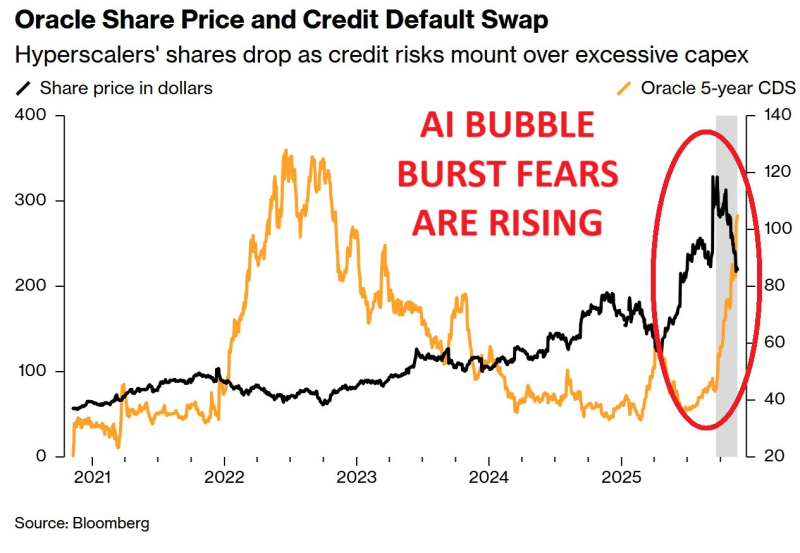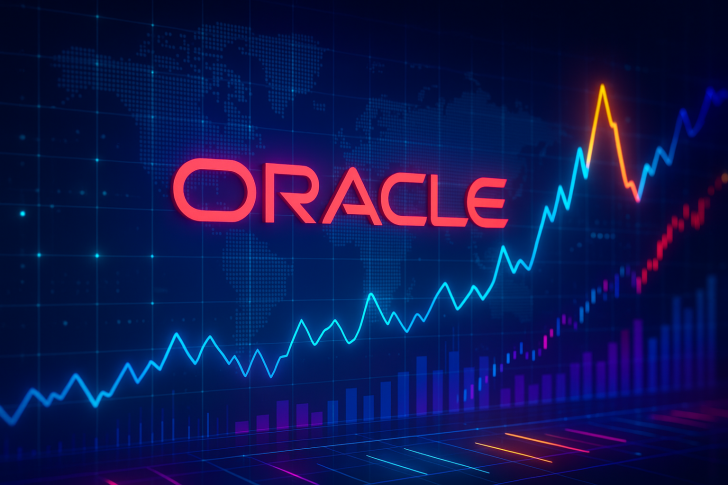⬤ Oracle's credit markets are flashing warning signs as traders rush to protect themselves against balance-sheet trouble. The company's five-year credit default swaps jumped to 105 basis points – a three-year peak – while the stock price headed in the opposite direction. The gap between falling shares and rising insurance costs tells a clear story: investors are getting nervous about Oracle's aggressive AI spending spree.

⬤ When credit default swap prices climb, it means the market sees bigger risks in a company's debt. Oracle's been pouring cash into AI infrastructure – cloud systems, power capacity, data centers capable of handling AI workloads. The CDS level shot up from below 60 basis points earlier this year to over 100, showing that traders are rethinking how much financial pressure Oracle can handle while funding these expensive projects.
⬤ This isn't just about Oracle. There's mounting skepticism across the market about whether tech companies can keep burning billions on AI infrastructure without running into serious cash flow problems. Oracle's CDS spike captures the core tension: can companies sustain this breakneck AI expansion without damaging their balance sheets? It's a question hanging over every major player making similar bets.
⬤ The jump in Oracle's credit protection costs marks a turning point in how the market views AI infrastructure spending. As power demands and data center costs keep climbing, investors are starting to separate the companies that can handle the financial weight from those that might hit funding roadblocks. Oracle's CDS breakout shows credit markets are already pricing in the next phase of the AI investment wave – and it's looking riskier than before.
 Eseandre Mordi
Eseandre Mordi

 Eseandre Mordi
Eseandre Mordi


